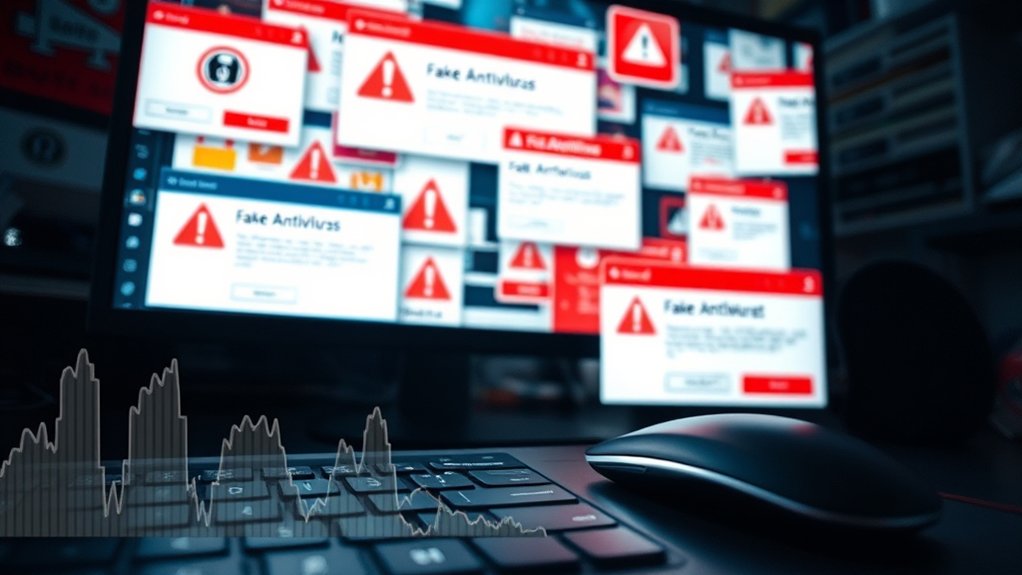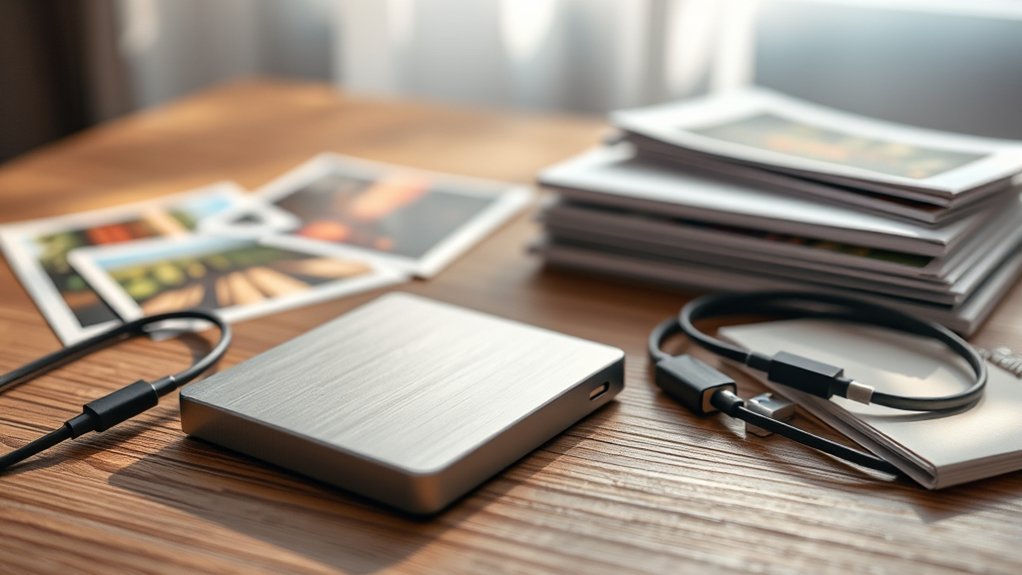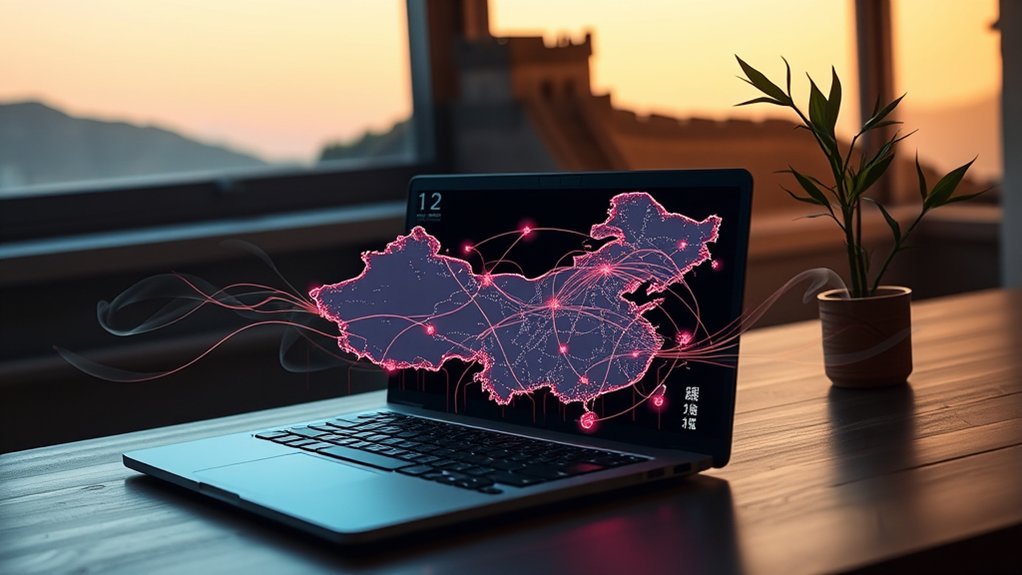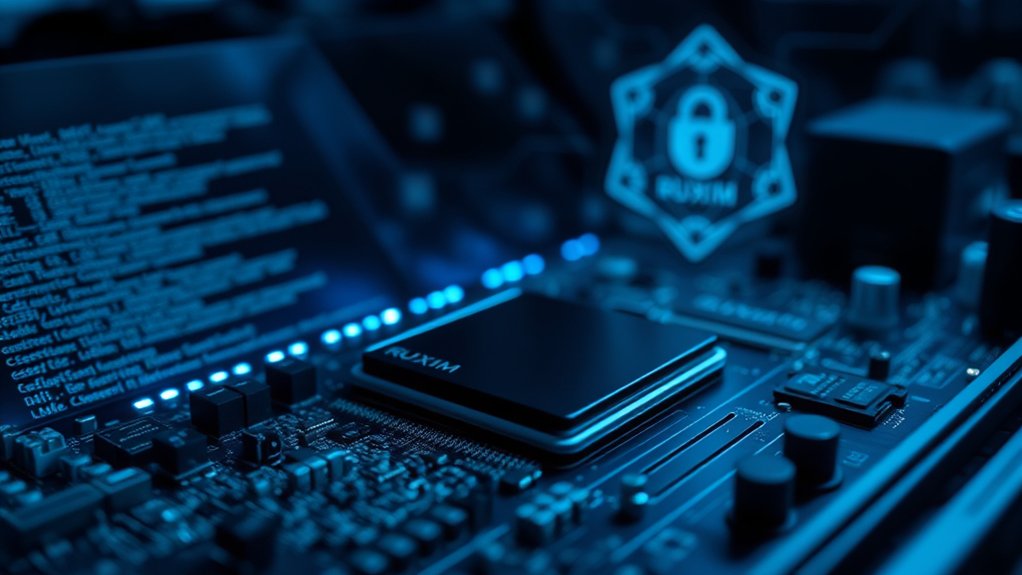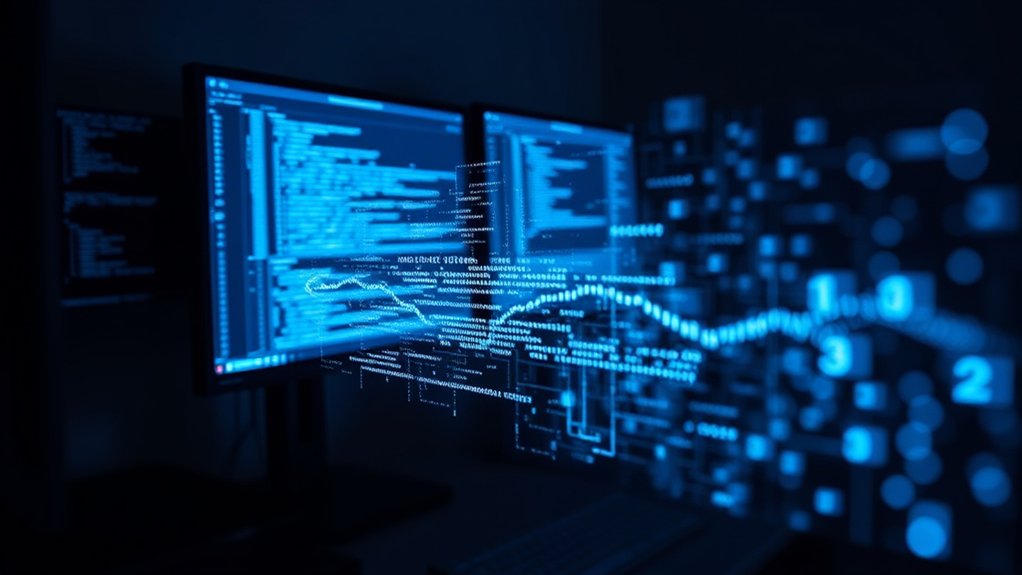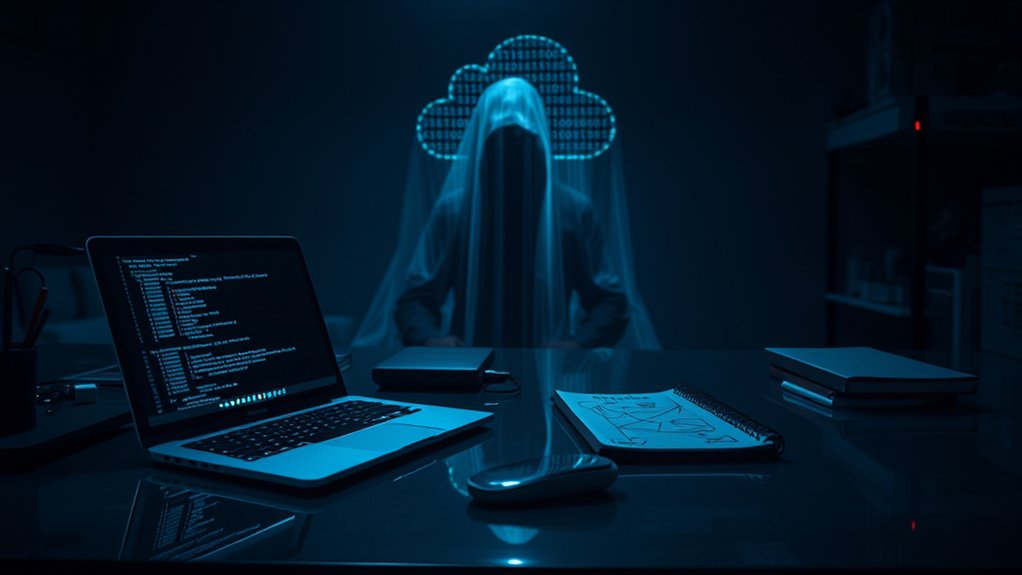Indicators that a computer may have been hacked include unusual pop-ups and unsolicited ads, unexpected application behavior, and unexplained high data usage. Users should likewise be wary of unauthorized transactions or password resets in their accounts. Additionally, slow browser performance, unexpected redirects, and frequent security alerts serve as red flags. Observing these signs can indicate potential malware infections or unauthorized access, highlighting the need for prompt investigation and action to safeguard personal information. Further insights provide deeper understanding.

How can an individual determine if their computer has been compromised by malicious intruders? The presence of unusual pop-ups and ads is often the first noticeable indication of a breach. These suspicious notifications can include fake antivirus alerts or unsolicited advertisements signaling potential malware infections.
In addition, a marked decline in system performance, such as prolonged startup times, lagging applications, or unexpected freezes, can indicate that malware is operating undetected in the background. Regular updates of the operating system and software are critical in preventing such vulnerabilities. It is essential to regularly monitor for unfamiliar connections on the network to detect any suspicious activity promptly.
Monitoring network activity can provide more insight. Unexplained high data usage may suggest that malware is communicating with external servers. Furthermore, the emergence of unfamiliar software or programs on the device can signify unauthorized access, which may lead to missing or modified files.
Monitoring network activity is crucial; unexpected high data usage and unfamiliar software can indicate unauthorized access by malware.
A thorough examination of email and social media accounts is also vital. Users should regularly inspect these accounts for unusual activity, including unauthorized messages sent to contacts, unexpected password resets, and unfamiliar transactions appearing on bank statements.
Changes to browser settings, such as unauthorized redirects or the appearance of unwanted extensions, should be closely scrutinized. If a user notices a slow browser or problems accessing system settings, these can be signs of malware interference.
Security software alerts should not be dismissed either; frequent notifications about malware detections or changes in security status can highlight compromised systems.
Moreover, one must pay attention to physical symptoms of compromised hardware. Unexplained overheating or increased data consumption without corresponding activity can be concerning. Network errors could also signify underlying issues.
Finally, stealthy types of malware, such as Remote Access Trojans, may silently exploit vulnerabilities, granting unauthorized control without the user’s knowledge.
Frequently Asked Questions
Can Antivirus Software Detect All Types of Hacking Attempts?
Antivirus software does not guarantee detection of all hacking attempts. Significantly, it may struggle with zero-day threats, ransomware, and exploits that utilize system vulnerabilities.
For example, signature-based detection relies on known malware databases, which can be insufficient against sophisticated attacks. Experts highlight that techniques like code packing and behavioral masking further complicate detection.
In the end, all-encompassing security necessitates a combination of tools, regular updates, and user awareness to improve protection against evolving threats.
What Steps Should I Take Immediately if I Suspect a Hack?
Upon suspecting a hack, immediate action is crucial. First, disconnect the network during keeping the device operational to minimize potential damage.
Then, swiftly report the incident to IT professionals, ensuring a structured response. Important steps include changing passwords and inspecting bank accounts for unusual transactions.
Using threat detection tools, such as malware scanners, aids the identification of further anomalies within the system, establishing a foundation for effective recovery and security improvement efforts.
How Can I Improve My Computer’s Security Post-Hack?
To improve computer security post-hack, individuals should immediately implement software updates, installing the latest patches.
Ensuring strong data protection through thorough backup strategies is essential. Multi-factor authentication (MFA) should be activated on critical accounts to deter unauthorized access.
Furthermore, conducting regular security audits is recommended.
Cybersecurity expert Jane Smith states, “A proactive approach to security can greatly reduce future vulnerabilities.”
Continuous education and threat awareness nurture a culture of cybersecurity resilience.
Are Certain Operating Systems More Vulnerable to Hacking?
Certain operating systems exhibit varying degrees of vulnerability to hacking.
Windows and Windows Server, for instance, account for approximately 52% of serious vulnerabilities largely because of their extensive usage. Unsupported versions heighten security risks considerably.
Conversely, macOS is less targeted because of its strong security architecture.
Cybercriminals often prefer systems with broad market shares, where exploitability is higher, underscoring the importance of regular updates and proactive security measures for users of these operating systems.
Is It Safe to Use Public Wi-Fi After a Hack?
Using public Wi-Fi after a suspected hack carries significant risks. Data interception and malware distribution are prevalent threats.
According to cybersecurity experts, unencrypted networks expose sensitive information, whereas fake networks lure unsuspecting users. A 2023 study indicates that 54% of public Wi-Fi users unknowingly connect to harmful networks.
As a result, it is essential to verify network authenticity, use a VPN, and frequently monitor devices to mitigate security breaches effectively.
